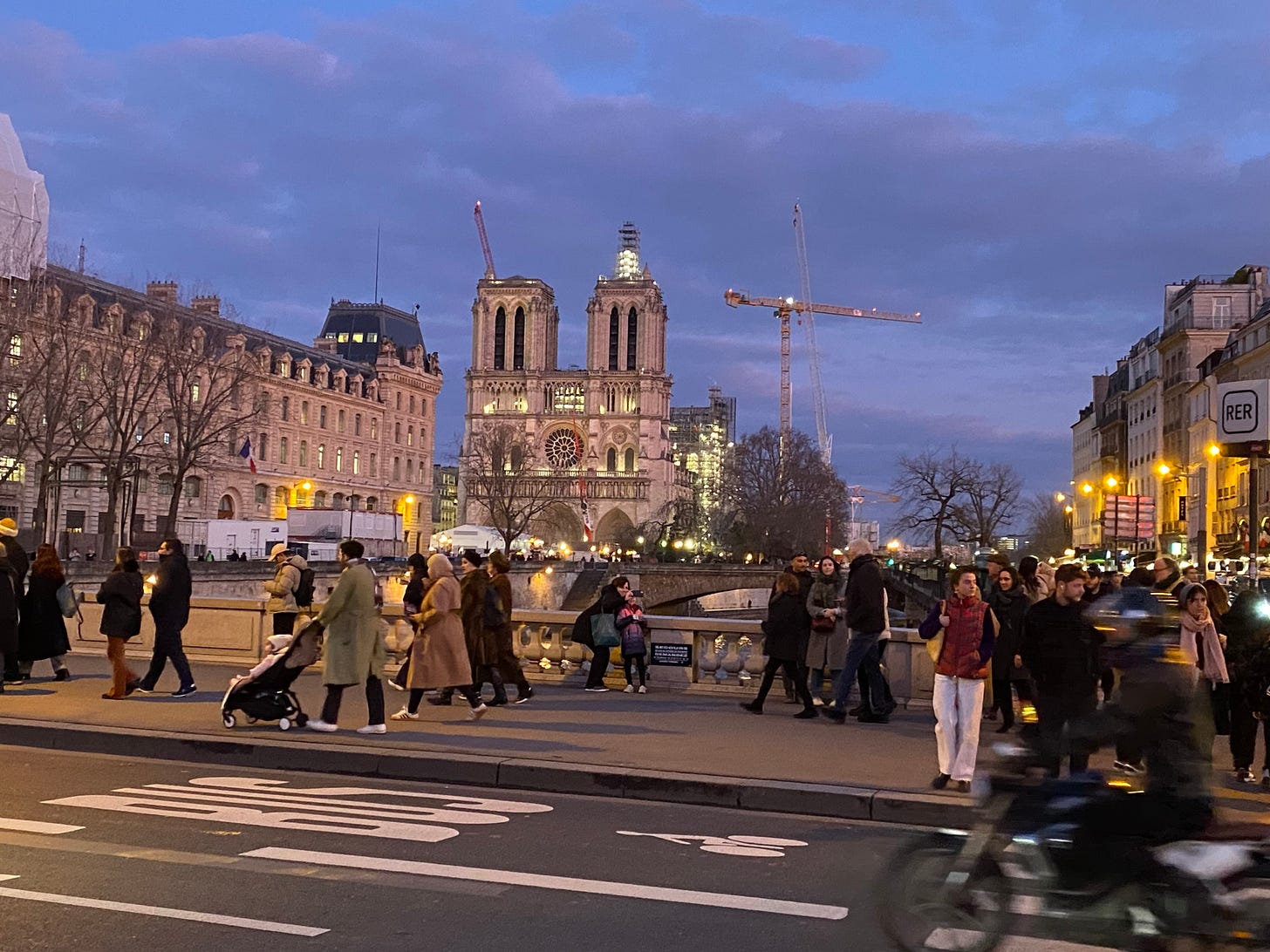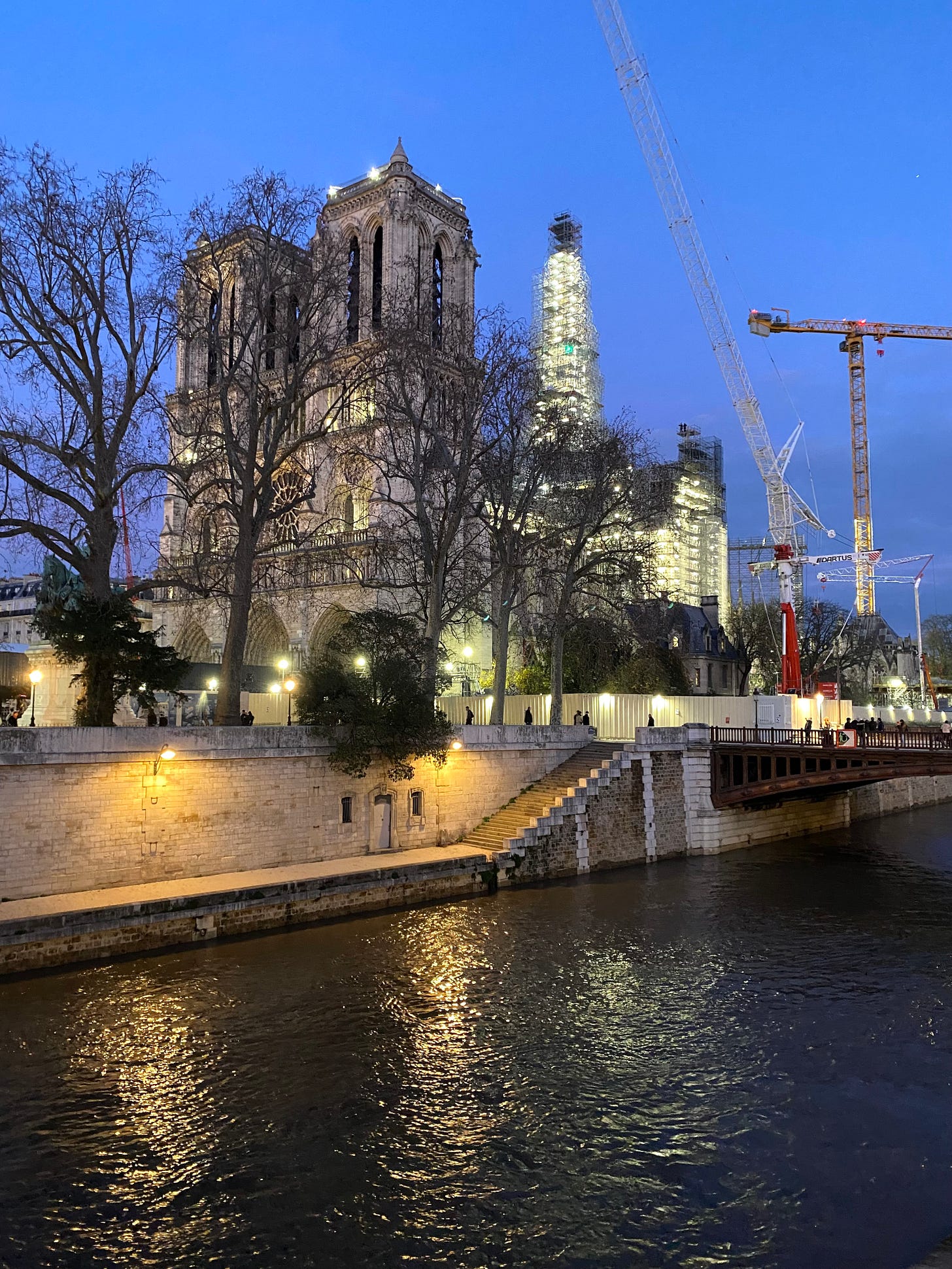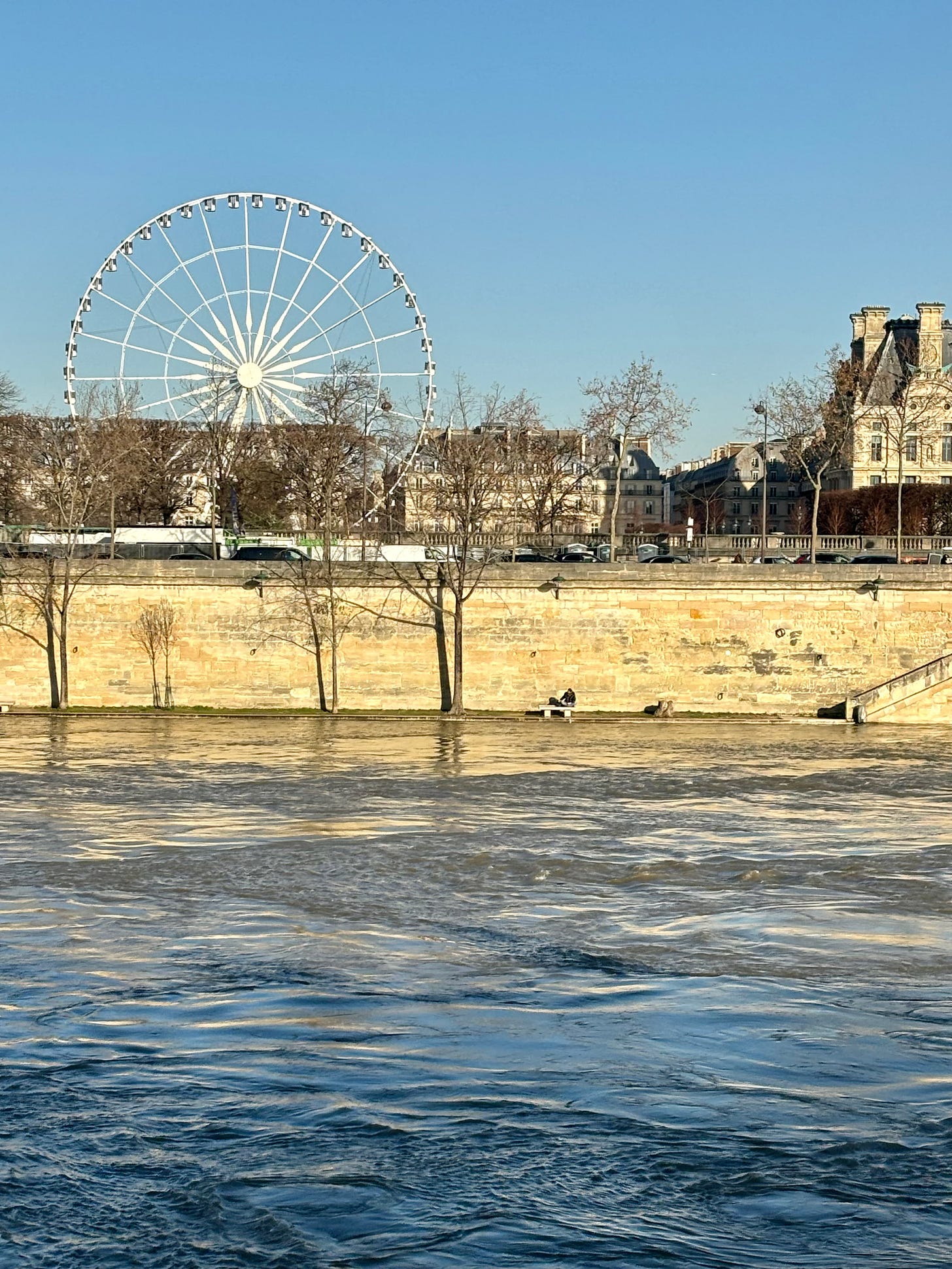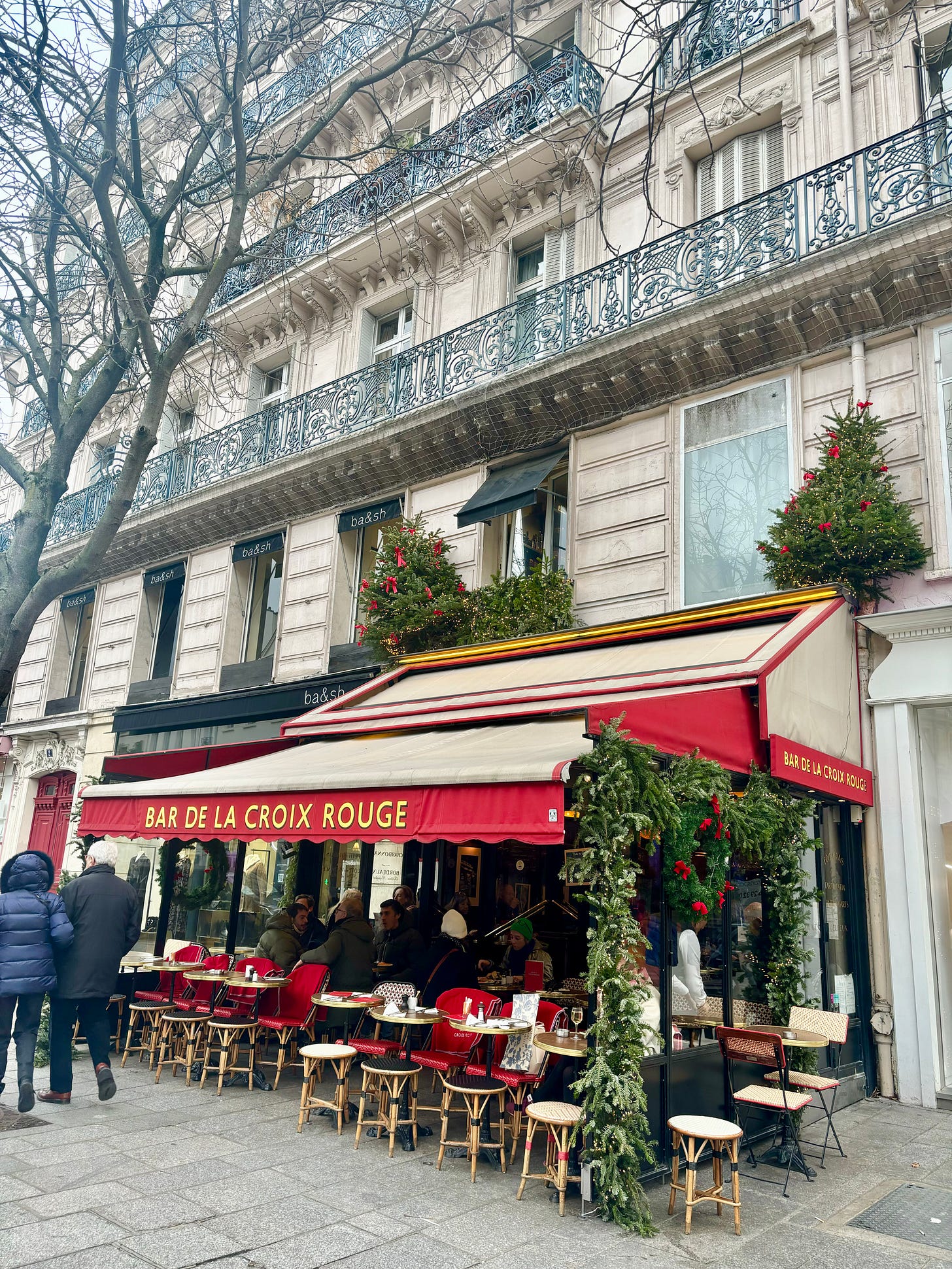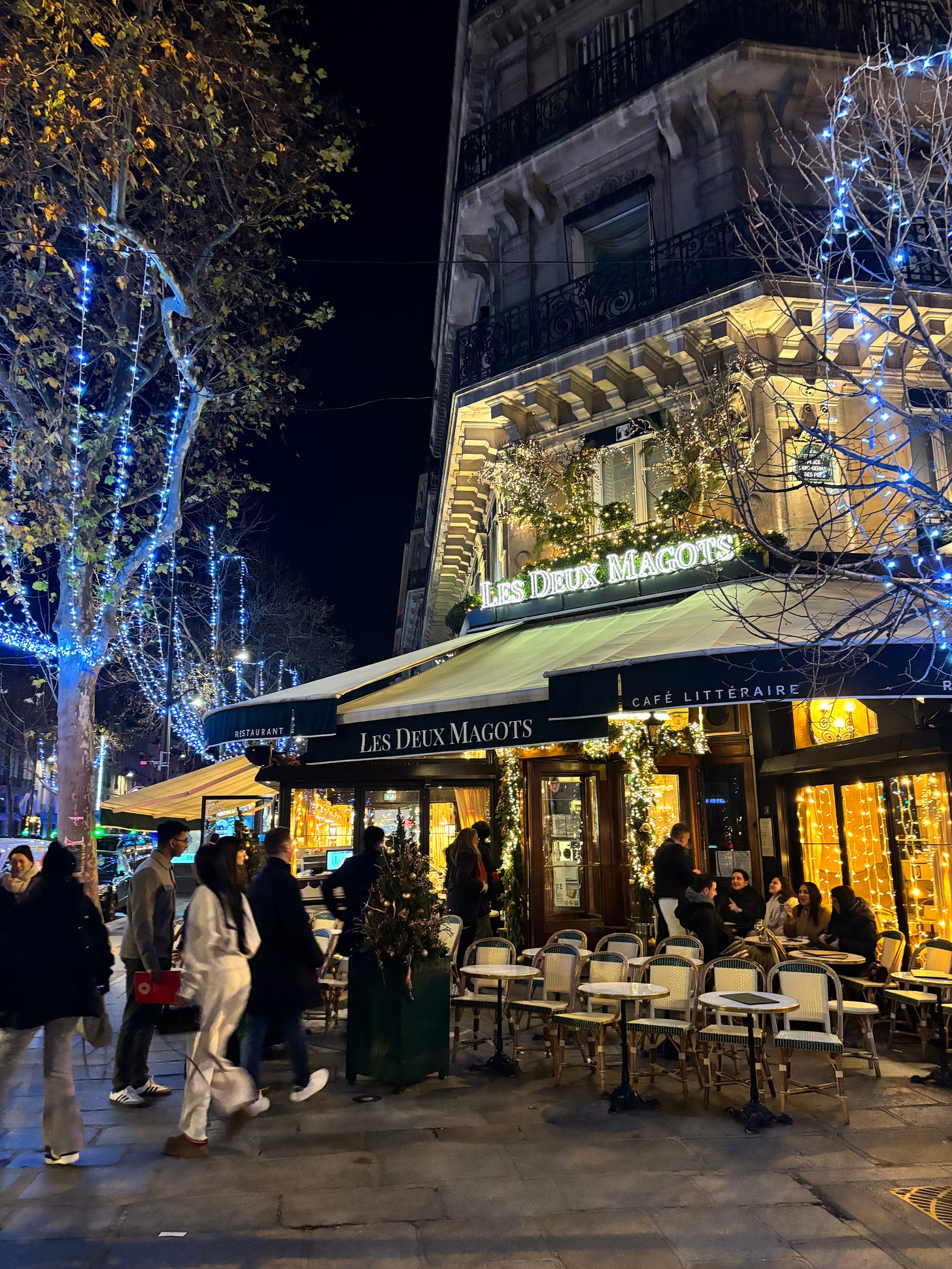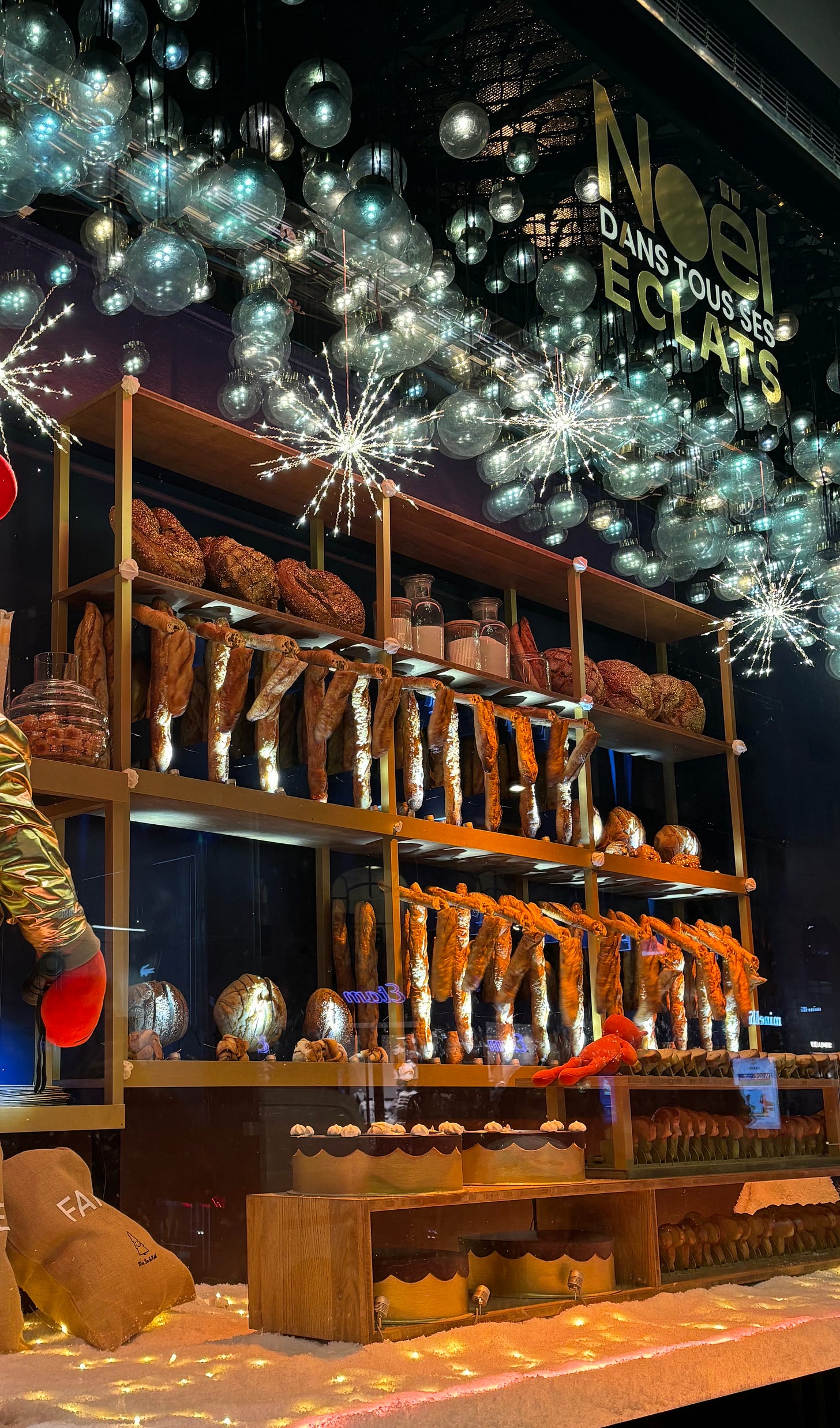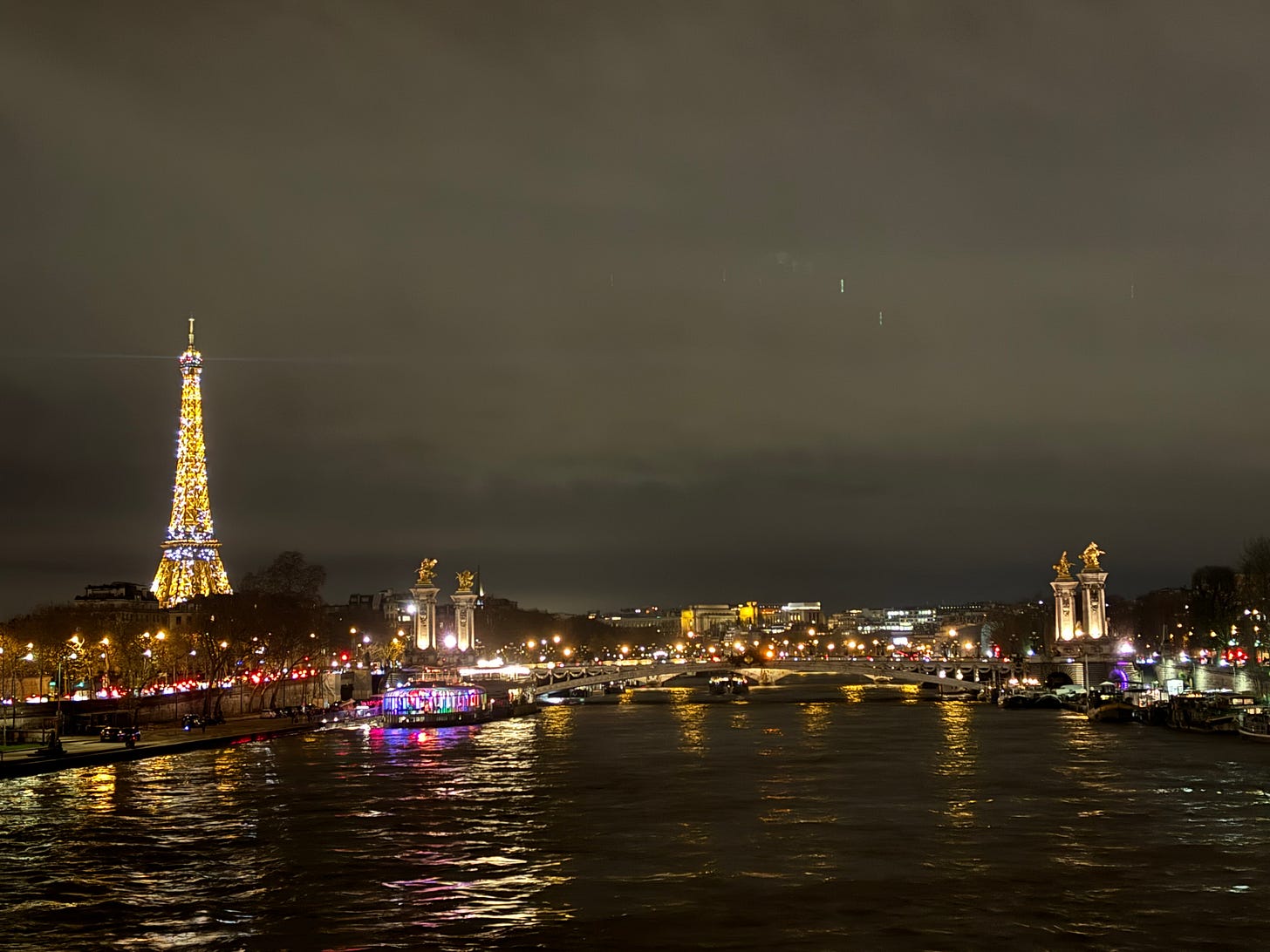Joyeuses Fêtes
Back in Paris for the holidays: the spire and rooster of Notre-Dame are back, golden stars, dancing baguettes, and crackling bonfires
After a couple months of living and working in Cambridge, Massachusetts for a climate science fellowship, I could not be happier to be back in Paris for the holidays! There is nothing quite like the first moment back on the Parisian pavement, taking in sights of corner cafés and Haussmann-style architecture.
Where to start? Perhaps with news that has been making headlines recently — Notre-Dame cathedral’s nearly 100 m-high spire rises again…. as you can see in the sun-kissed photo below, the spire is still under wraps behind the scaffolding, but it is well on its way to its former glory.
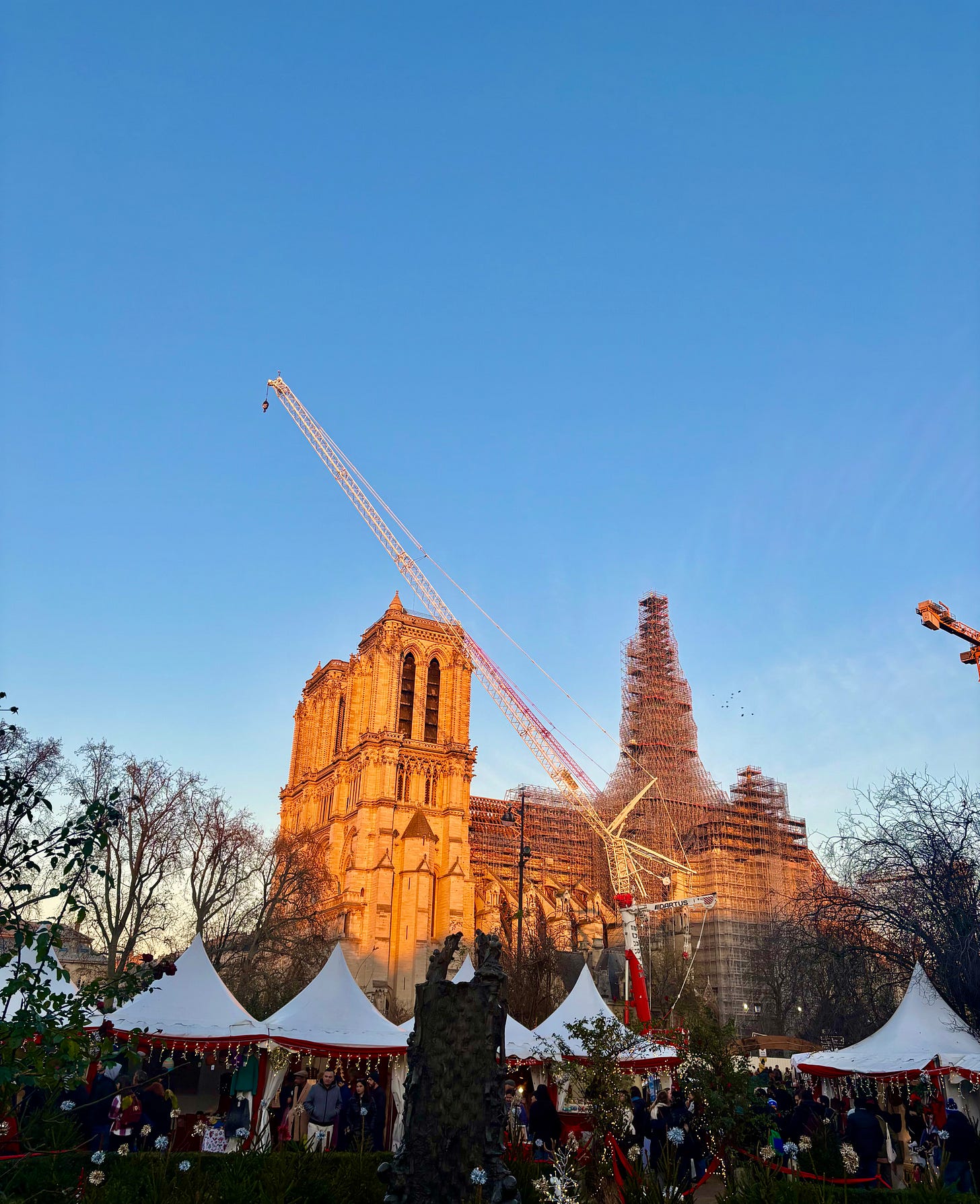
The former spire, made of one thousand wooden pieces, was created in the 19th century, after the original 13th century spire was damaged. As you may have seen in videos (or in person), the 19th century spire shockingly and dramatically collapsed in the fire that ravaged the landmark in 2019. The cathedral is, however, set to re-open in December 2024, just in time for a Christmas service next year inside a partially renovated space.
Here is another view of the spire, looking a bit like a Christo and Jeanne-Claude sculpture wrapped in its scaffolding, and shining brightly in the twilight blue hour.
Although you cannot make it out in these photos, another newsworthy update is that the golden rooster, the national emblem of France (Latin gallus meaning Gaul and coq/rooster) and a symbol of Christianity, is back up on Notre-Dame as well. This particular Gallic rooster is supposed to resemble a phoenix, doing what a phoenix knows best, rising from the proverbial ashes with his flame-like wings. (The previous rooster, which miraculously survived the fire, will retire to a museum.)
Last weekend, right before heading out of the house, some friends and I realized our tickets for a show were actually not until the following evening. Last minute scrambling ensued, we ended up going to a lovely Vivaldi and Händel concert at Saint-Germain-des-Prés, one of Paris’ oldest churches, a few minutes walk from my apartment.
A few years ago, Saint-Germain was also being restored, including painting the ceiling and walls in the rich and vibrant colors of years past. At the time, the American Friends for the Preservation of Saint-Germain-des-Prés sent out a call : adopt a star and support the restoration! So, for Christmas that year, my family and I gifted each other our own golden stars on the ceiling (see photo below). It is fun to visit your adopted star and feel attached to a piece of history.
At the end of this evening classical music concert, there was a sing-along of both French (‘Il est né le divin enfant’) and American carols (like Jingle Bells and Hark the Herald Angels). It was a pretty placid affair, especially compared to the BOISTEROUS sing-along at the Boston Pops earlier in December, where I went with my best friend in Boston. The Boston Pops’ rendition, or remix of the 12 Days of Christmas gives a sense of how exuberant that sing-along could become.
The next day, the sun was shining, quite an unusual event in the grey, damp Parisian winter months (truly the opposite of the song in La La Land, Another Day of Sun). Here is a bike lane view, while cycling to a friend’s dance performance and pausing to admire the swift flow and turbulent eddies of the Seine.
These turbulent eddies were a good transition to one of the blockbuster shows of the fall in Paris, at the Musée d’Orsay, ‘Van Gogh in Auvers-sur-Oise’. The town northwest of Paris is where van Gogh spent his final months with astounding artistic productivity before shooting himself in a wheat field near Auvers.
The show was remarkable, but also remarkably crowded, so I will have to return when there are fewer crowds. I was initially struck (as someone studying clouds) by interesting debate regarding the clouds and sky in one of the works, below — is the sky finished, or unfinished? The caption writes it is “one of the artist’s most spectacular experiments in Auvers” with its anti-clouds, defined in opposition to the broad, blue brushstrokes going in all directions. Others, however, claim the work is one of his last paintings, and he did not finish the work before his death.
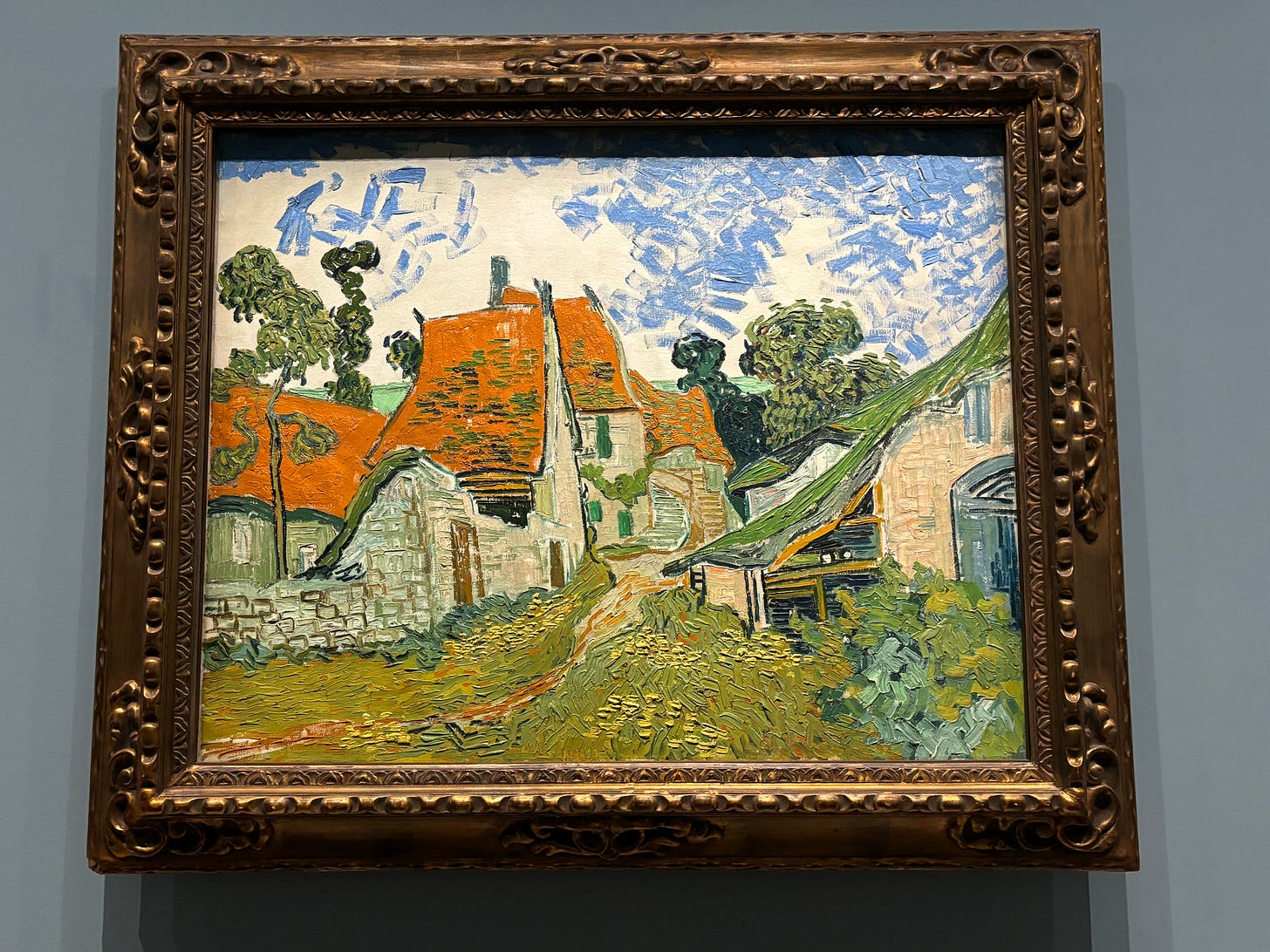
What do you think?

The following week was the last week of normal work before the holidays, and I was lucky enough to spend it working remotely from Paris. There are a lot of things I appreciate about spending some time back in the US, but I will say that no restaurants or cafés approach the feeling of those in Paris.
One evening, in the midst of dreary, drizzling weather, I met a friend for mulled wine on the indoor terrace of the Deux Magots. Some might think it is only for tourists these days, but Parisians do still go there for a special occasion. The photo below perhaps gives a glimpse of the warm, luminous, special atmosphere inside.
As we are still near the winter solstice, light is a precious commodity, and while the Big Light in the sky might be in its winter hibernation mode, one can still marvel at the plethora of artificial lights around town. Gold, silver, amber, bright white, red, green, blue: all shades and tones are glimmering and shimmering, their reflections sometimes glistening in the wet pavements, almost like walking into Caillebotte’s rainy street painting…
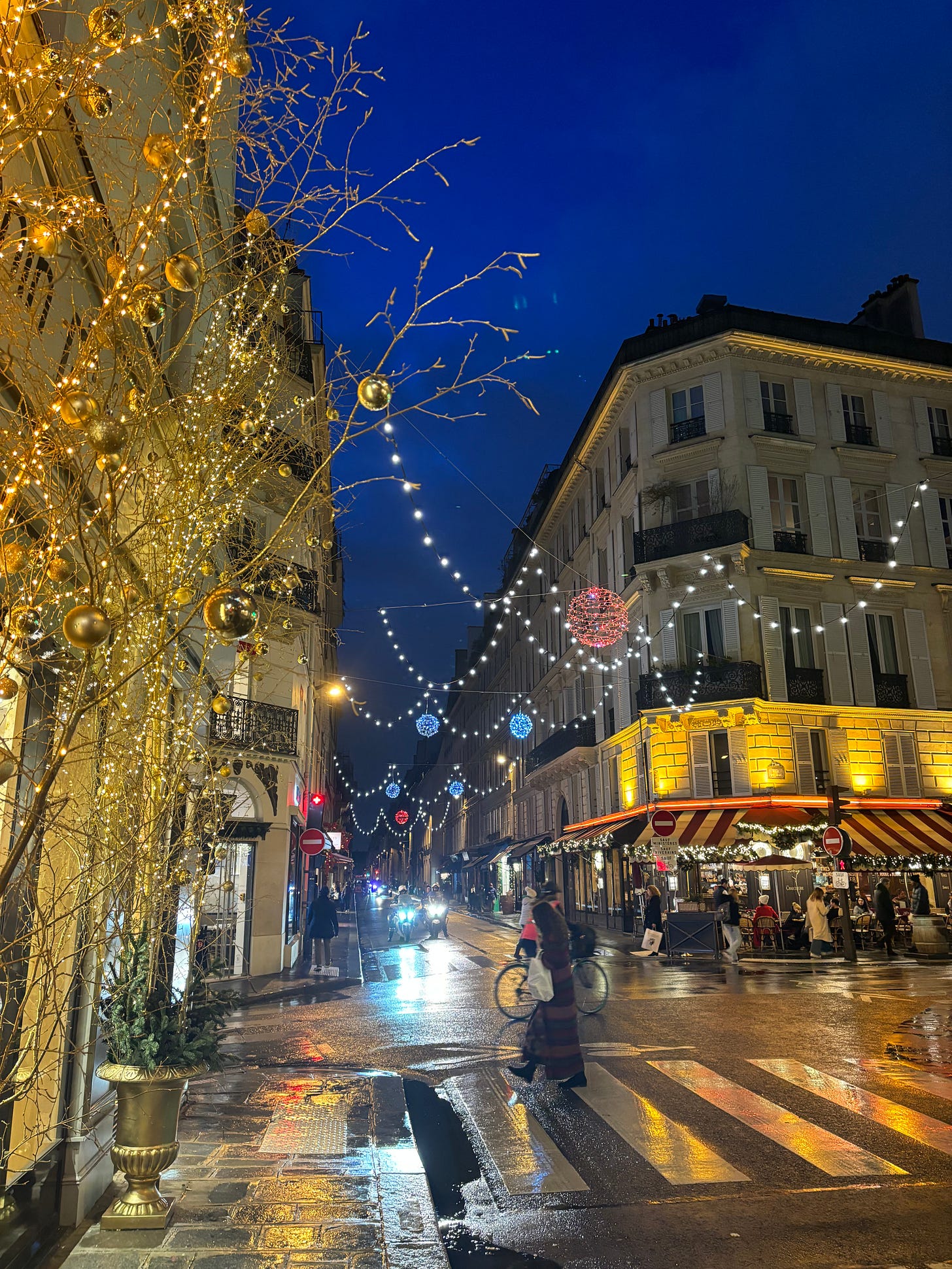
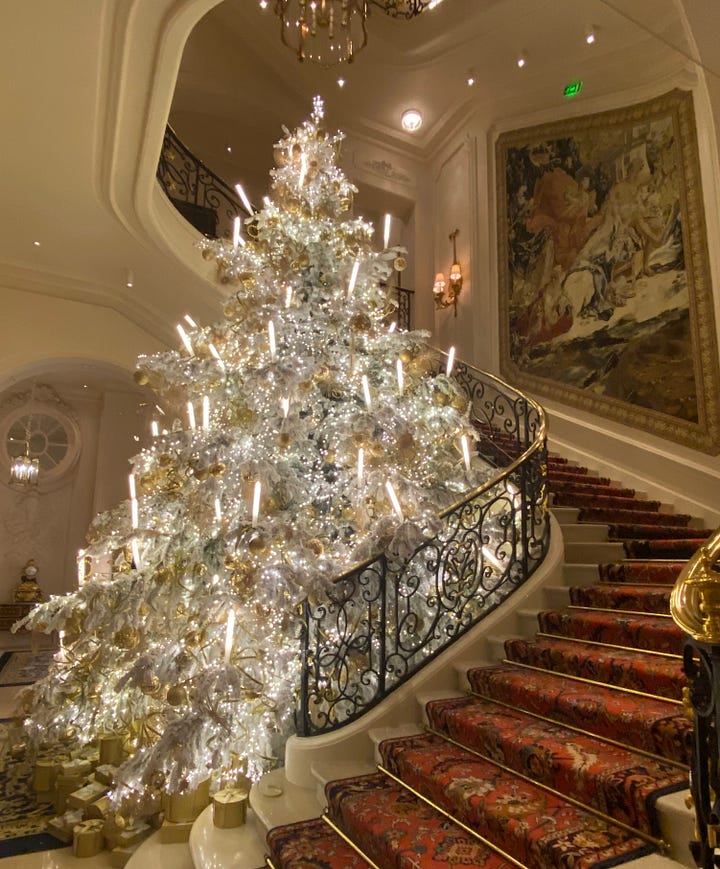
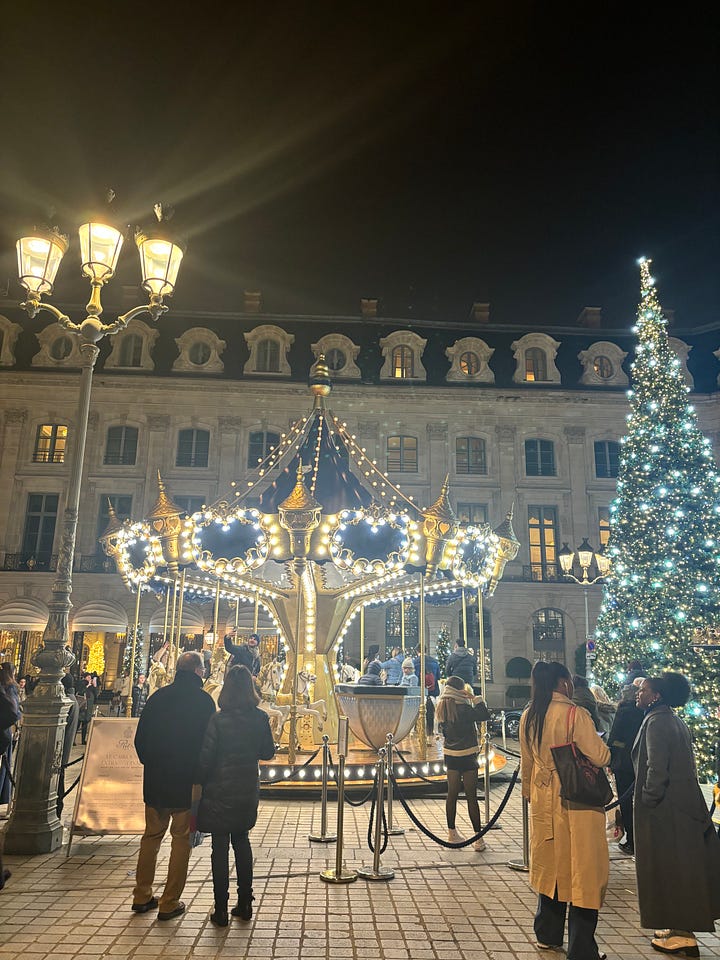

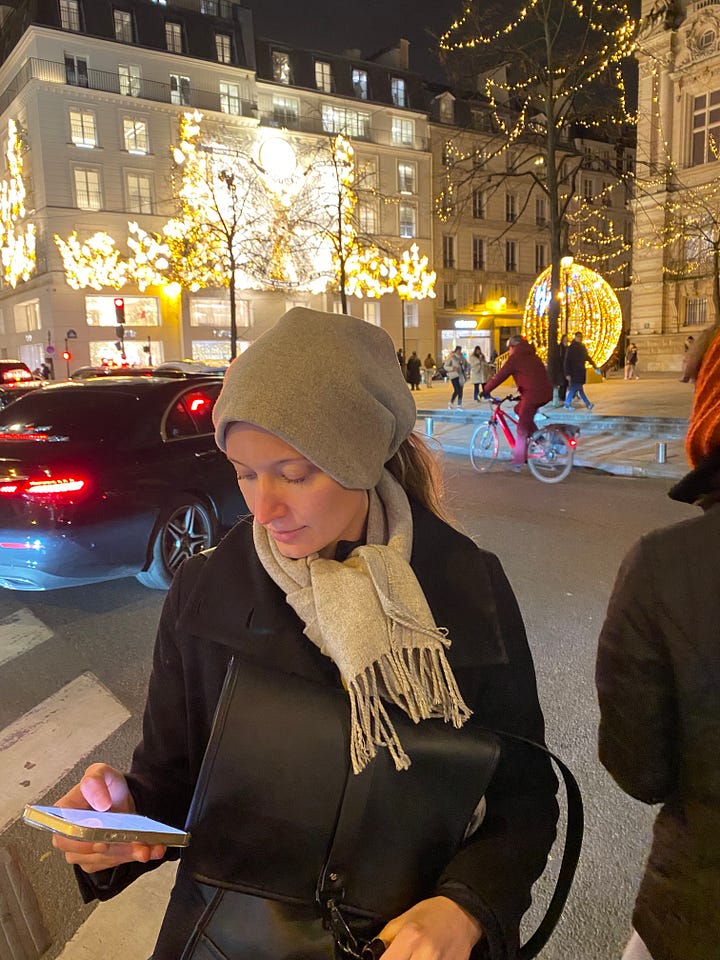
All this talk of darkness and winter hibernation making you hungry? But where did the baguettes go? In France there are perhaps fewer elves busying themselves with preparing and delivering presents. But the baguettes have not been slacking, dancing the holiday season away with a can-can in the window display of the luxury department store Le Bon Marché. Luckily for me, I live around the corner. While the objects inside are usually out of my budget as an academic, the window displays outside never fail to delight when passing by.
In another store window around the corner, I also paused to admire this Bûche de Noël, or yule log cake … rather fittingly, in French, window shopping is referred to as window ‘licking’ (a bit of a strange formulation, I must admit).
The Bûche de Noël has its origins in the ancient pagan tradition of celebrating the winter solstice by burning a wood log from a fruit tree, which would guard against evil spirits. This pagan tradition was gradually subsumed into Christianity, with the yule log symbolizing blessed warmth and light in the deep, dark winter.
In the 19th century, French bakers (there is a debate who exactly was the first sweet genius to do so) transformed this tradition into cake form, as the French can so brilliantly do! Everything can and should relate to food... (Side note: this morning, I was waiting for a quick expresso at a zinc café bar and making less than one minute of small talk with the person next to me … who within 20 seconds was talking about mustard, saying he brings back mustard from Paris to Brussels because only here does it taste good. Only in France can small talk not be about the weather, or sports, but about mustard.)
Not to be outdone by a cake, there was also a real bonfire at the “equestrian theater” Zingaro, in the north of Paris in Aubervilliers, introduced to me by my friend’s family who have graciously introduced me to so much about French culture :) Zingaro refers to ‘wandering people’ (or ‘gypsy’) in Italian, encapsulating the free-spirited, nomadic spirit of the troupe of horses, dancers, acrobats, donkeys, geese, peacocks, and more (I won’t spoil the fun). They blend an equine acrobatics with music, dance, and a beautiful scenography.
The founder Bartabas is real creative genius who is un peu fou (a little crazy), creating performances unlike anything in the world. He is also in charge of the royal horse stables at Versailles, and the horses are trained and kept to athletic perfection, as close to prima ballerinas in dance… Photos are not allowed inside the wooden theater, which adds to the mystique and preserves the ethereality of the spectacle.
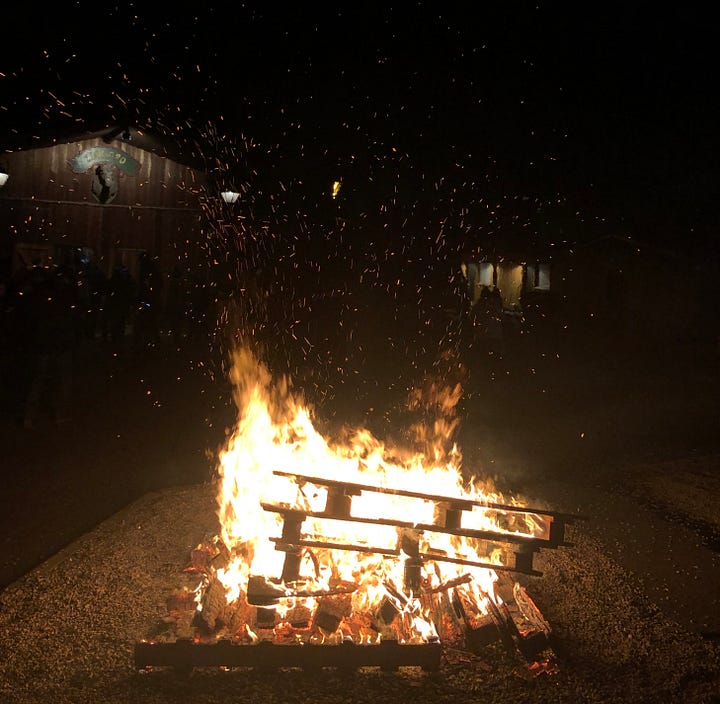
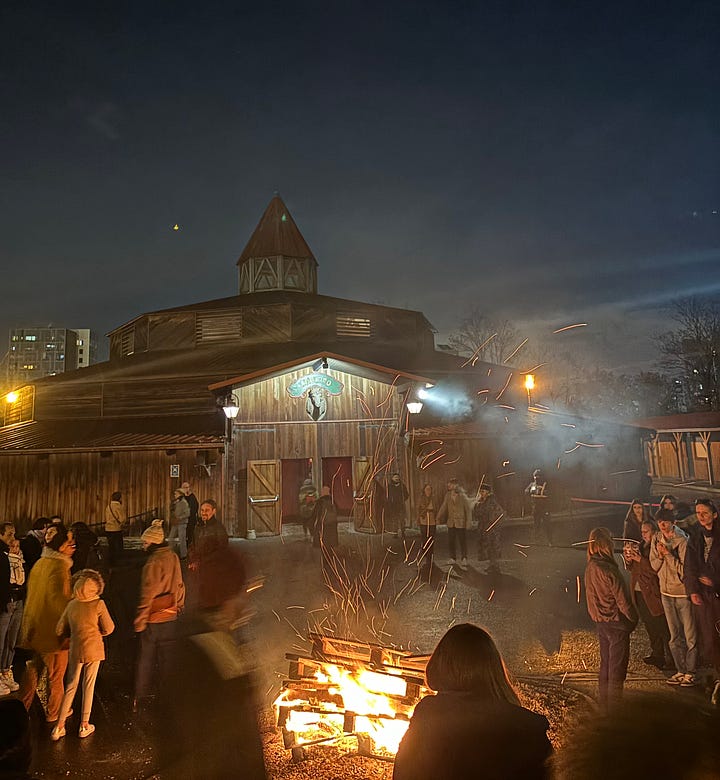
Each year, the show explores a different culture in its ‘cabaret de l’exil’, the cabaret of exile. This year the theme was Persian women in exile, with traditional music and songs in harmony with the acrobatics on horseback and fire dancers, all reflected in a watery surface. Before the show, there is another tent to gather for food and drink, and afterwards there is always a bonfire to gather around with tea or mulled wine. It is worth a visit to see this spectacle for yourself.
Speaking of creative geniuses, one evening two friends and I also went to take a walk at Versailles’ Baroque Christmas spectacle. In between being amazed by the ceilings, we had to chuckle at the Santa in his elegant outfit in a Baroque environment, though he was noticeably less round and jolly than the Santa we are used to since ‘Twas the Night Before Christmas (“His dimples how merry! His nose like a cherry!”)
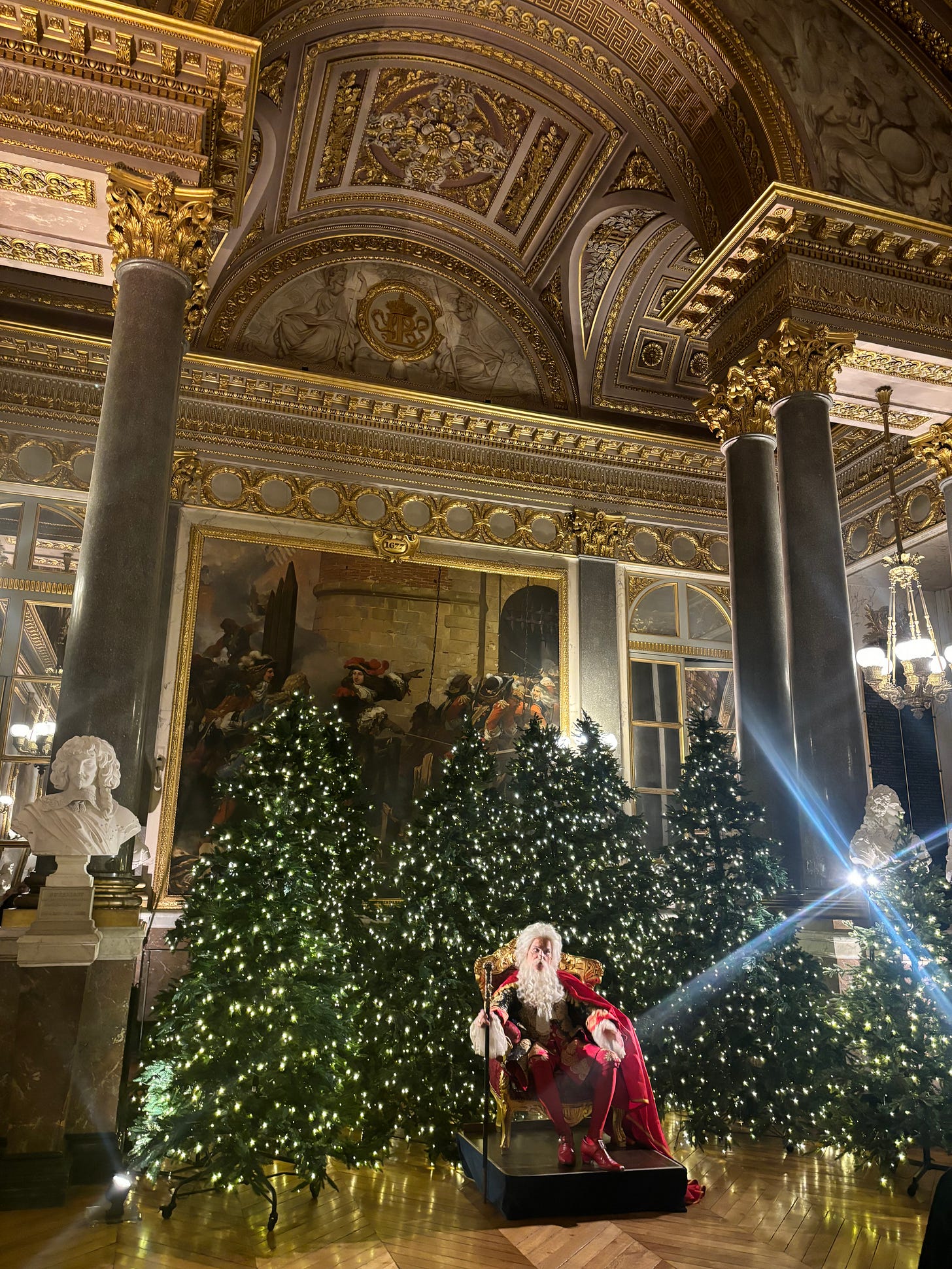
There was a beautiful fog that night, as Versailles, sitting above Paris in the valley, was a few degrees colder and near freezing.

Now I am writing this while unterwegs to Germany in a comfy train, for another set of holiday traditions, from real candles in Christmas trees (with real fire, and a bucket of water nearby) and carols like Tochter Zion, to Lebkuchen (gingerbread, on a host-like wafer, topped with chocolate) and clementines galore.
With that, I would like to wish you all the best for your holiday season — full of warmth and good cheer — and look forward to hearing about your Christmastime, wherever you may spend it.
Joyeux Noël, Frohe Weihnachten, Merry Christmas,
Anna Lea
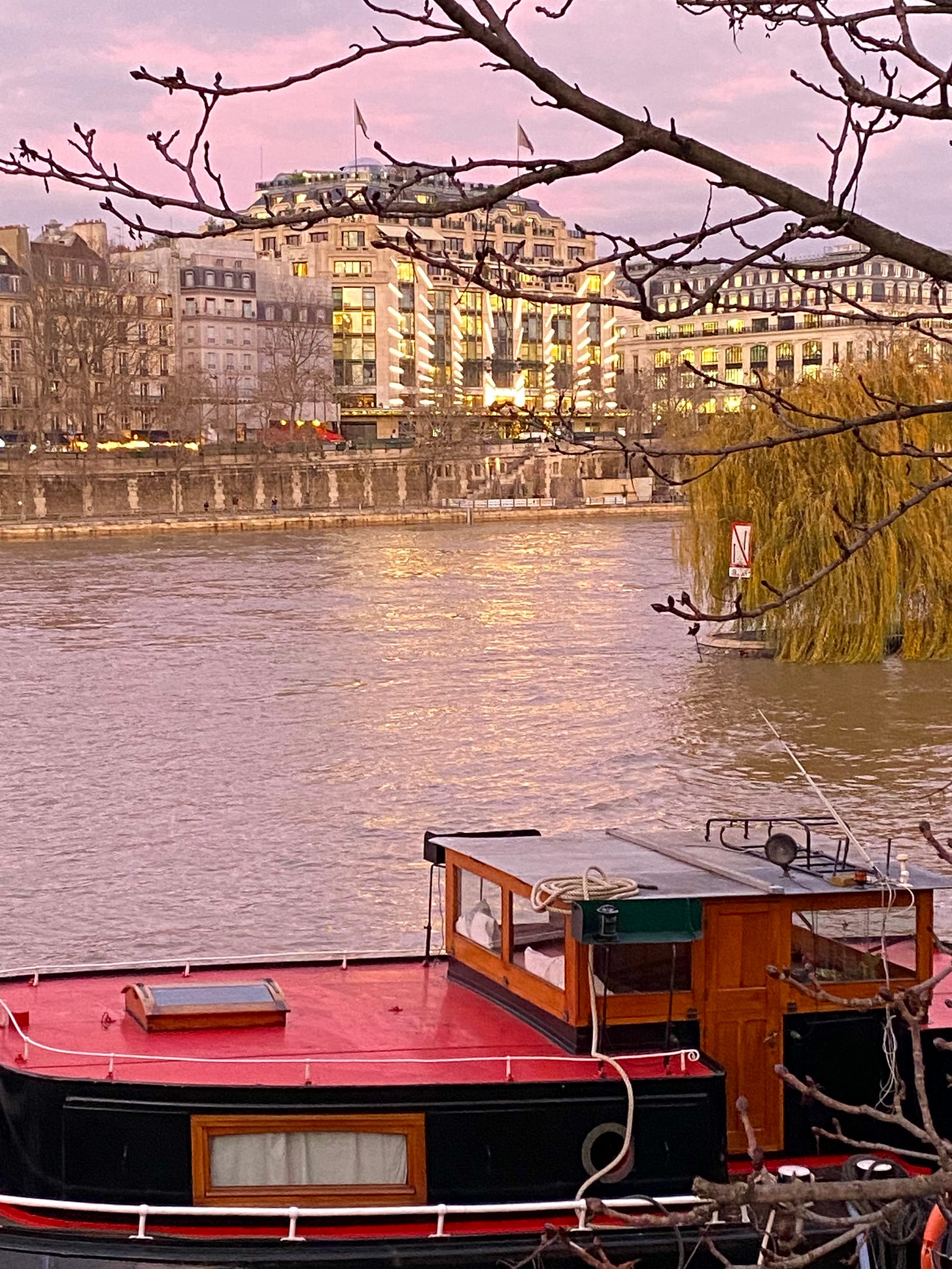
All photos are mine :)




